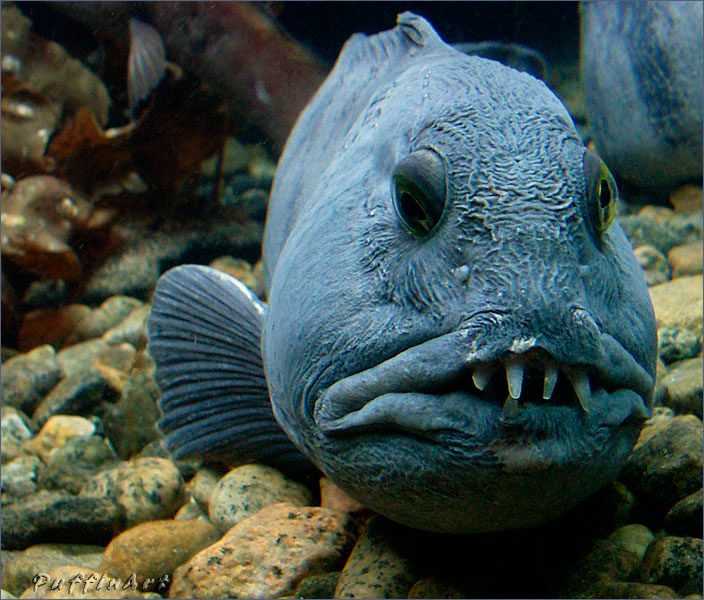Unveiling The Mysteries Of The Ugly Fish: Nature's Oddities
The ocean is home to a myriad of creatures, some of which are undeniably beautiful, while others fall into the category of the bizarre and the ugly. Among these, the "ugly fish" stands out as a fascinating subject of study and intrigue. These fish challenge our perceptions of beauty in the natural world and remind us that aesthetics are often subjective. As we dive into the depths of the oceans, we encounter these remarkable beings that, despite their looks, play crucial roles in their ecosystems.
In the realm of marine life, the term "ugly fish" often refers to species that may not fit the traditional mold of beauty. Their appearances, characterized by unusual shapes, colors, and features, evoke both curiosity and fascination. But what exactly makes these fish so unique? Is it their evolutionary adaptations, or simply the way they have evolved to survive in their specific environments? As we explore the characteristics and behaviors of these creatures, we unravel the complexities of nature's design.
Beyond their physical attributes, ugly fish often possess intriguing behavioral traits and ecological significance. They may serve as vital components of their habitats, contributing to the health of marine ecosystems. Understanding the role of these creatures can shift our perspective on beauty and highlight the diversity of life beneath the waves. Join us as we delve deeper into the world of ugly fish, exploring their biology, habitats, and the reasons behind their unconventional appearances.
What Makes a Fish "Ugly"?
When we think of fish, images of sleek bodies and vibrant colors often come to mind. However, the "ugly fish" category includes species that possess unusual physical features that may be off-putting to some. Here are a few characteristics that define these fascinating fish:
- Odd body shapes and sizes
- Unusual color patterns and textures
- Prominent facial features, such as large mouths or bulging eyes
- Rough or slimy skin instead of scales
Are Ugly Fish Important for Ecosystems?
Despite their lack of conventional beauty, ugly fish play essential roles in their ecosystems. Many of them are scavengers, helping to keep the ocean floor clean by feeding on dead organisms. Others may have unique predatory habits that control the populations of other marine creatures. The importance of these fish extends beyond their appearances and highlights the interconnectedness of life in the ocean.
Can You Name Some Notable Ugly Fish?
Several species are often recognized for their unconventional looks. Here are a few notable examples:
- Blobfish: Known for its gelatinous appearance, the blobfish has been dubbed the "world's ugliest animal."
- Anglerfish: With its protruding jaw and bioluminescent lure, this deep-sea fish is both creepy and captivating.
- Batfish: With its flattened body and ability to "walk" on the ocean floor, the batfish is a quirky inhabitant of the sea.
- Goblin Shark: This rare species features a long, flat snout and an extendable jaw, making it truly unique.
How Do Ugly Fish Adapt to Their Environment?
Ugly fish have evolved various adaptations that allow them to thrive in their specific habitats. For instance, many deep-sea species have developed bioluminescence to attract prey or communicate with others in the dark depths of the ocean. Others have developed camouflage techniques that help them blend in with their surroundings, protecting them from predators.
What Can We Learn from Ugly Fish?
Studying ugly fish can provide valuable insights into the diversity of marine life and the evolutionary processes that shape these creatures. Their unique adaptations can teach us about resilience and survival in the face of environmental challenges. Furthermore, they serve as a reminder that beauty is not the only measure of worth in the natural world.
Are There Conservation Efforts for Ugly Fish?
While many ugly fish species may not be as well-known or celebrated as their more beautiful counterparts, they are still vulnerable to threats such as habitat destruction and overfishing. Conservation efforts are essential to protect these unique creatures and their habitats. Initiatives include:
- Establishing marine protected areas
- Implementing sustainable fishing practices
- Conducting research on their populations and habitats
In Conclusion: Embracing the Beauty of the Ugly Fish
In a world that often celebrates beauty and perfection, the ugly fish reminds us that there is value in diversity and uniqueness. These creatures challenge our perceptions and highlight the wonders of evolution and adaptation. As we continue to explore and learn about these fascinating beings, we gain a deeper appreciation for the complexity of life in our oceans. So, the next time you encounter an ugly fish, remember that it plays a vital role in the tapestry of marine life, and perhaps, its beauty lies in its very oddity.
Article Recommendations
- Funny Fantasy Basketball League Names
- Eazy E Wife
- Laura Ingraham Husband
- Diddy Party Jessica Alba
- Vedang Raina Parents
- Jessica Springsteen Married
- Eros Philadelphia
- Jackerman
- Vanessa Trump
- Lightskin Bbw


